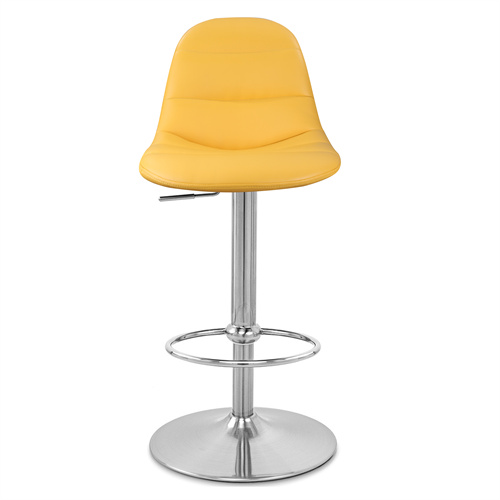In the modern kitchen, where space is often at a premium, under counter kitchen bar stools emerge as an essential element for maximizing functionality and style. This article delves into the various aspects of choosing the right under counter bar stools, their benefits, design considerations, and practical tips for integrating them into small kitchens.
Understanding Bar Stool Heights
Difference Between Bar Stools and Counter Stools
When selecting bar stools for your kitchen, understanding the height differences is crucial. Bar stools typically stand at a height of 42 inches, with seat heights ranging from 29 to 31 inches. In contrast, counter stools are designed for surfaces that are 35 to 39 inches high, with seat heights between 24 and 27 inches. This distinction is vital to ensure comfort and accessibility.
Measuring for the Right Fit
To achieve the perfect fit, it's recommended to leave a gap of about 9 to 12 inches between the seat of the stool and the underside of the counter. This ensures adequate legroom and comfort for users. When measuring your kitchen space, consider both the width and height of your counters to select stools that complement your design.
0231.jpg)
Under Counter Kitchen Bar Stools
Benefits of Under Counter Bar Stools
Space Efficiency
Under counter bar stools are specifically designed to tuck neatly beneath counters when not in use. This feature is particularly beneficial in small kitchens where floor space is limited. By utilizing vertical space effectively, these stools help maintain a clean and uncluttered environment.
Versatile Design Options
Modern bar stools come in various designs, including backless options that can easily slide under counters. This versatility allows homeowners to choose styles that match their kitchen décor while optimizing space. Narrow bar stools, typically no more than 18 inches wide, are especially useful in tight areas.
Enhanced Functionality
Bar stools can serve multiple purposes beyond seating. They can act as casual dining spots, additional workspace for meal prep, or even a place for socializing during gatherings. Their adaptability makes them a valuable addition to any kitchen layout.
Selecting the Right Bar Stool
Considerations for Small Spaces
When choosing bar stools for compact kitchens, several factors should be taken into account:
-
Width and Depth: Opt for narrow designs that allow for sufficient spacing between stools—aiming for about 6 to 10 inches apart. This spacing not only enhances comfort but also prevents a cluttered appearance.
-
Armless vs. Armed Stools: Armless stools save horizontal space and are easier to maneuver in tight areas. However, if space allows, armed stools can provide additional comfort.
-
Adjustability: Consider adjustable height stools that can accommodate different counter heights and user preferences. This feature is particularly useful in households with varying needs.
.jpg)
Home Goods Kitchen Counter Stools
Material and Style Choices
The material of the bar stool plays a significant role in both aesthetics and durability. Common materials include wood, metal, and upholstered options:
-
Wood: Offers a classic look and warmth but may require more maintenance.
-
Metal: Provides a modern feel and is often more durable.
-
Upholstered: Adds comfort but may not be as easy to clean.
Choose a style that complements your kitchen's overall design theme—whether it's contemporary, rustic, or minimalist.
Practical Tips for Maximizing Space
Strategic Placement
The placement of bar stools can significantly affect the flow of your kitchen. Position them under counters or islands when not in use to keep walkways clear. Additionally, consider placing them near food prep areas or close to appliances for convenience during cooking.

Multi-functional Furniture
Incorporate multi-functional furniture pieces that serve more than one purpose. For instance, select bar stools with storage options or integrated tables that can double as extra workspace when needed.
Visual Tricks
Utilize visual tricks to create an illusion of space. Light-colored bar stools can make an area feel larger and airier. Additionally, using transparent materials like acrylic can enhance light flow within the kitchen.
Conclusion
Under counter kitchen bar stools are not just functional; they are an integral part of maximizing space in small kitchens while adding style and comfort. By understanding the differences between stool types, considering design options carefully, and implementing practical tips for placement and selection, homeowners can create an inviting atmosphere that enhances their culinary experience.





0723.jpg)